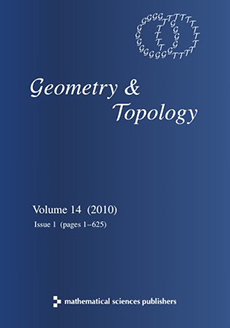Abstract
The Jones–Witten theory gives rise to representations of the (extended) mapping class group of any closed surface indexed by a semi-simple Lie group and a level . In the case these representations (denoted ) have a particularly simple description in terms of the Kauffman skein modules with parameter a primitive th root of unity (). In each of these representations (as well as the general case), Dehn twists act as transformations of finite order, so none represents the mapping class group faithfully. However, taken together, the quantum representations are faithful on non-central elements of . (Note that has non-trivial center only if is a sphere with or punctures, a torus with or punctures, or the closed surface of genus .) Specifically, for a non-central there is an such that if and is a primitive th root of unity then acts projectively nontrivially on . Jones’ original representation of the braid groups , sometimes called the generic –analog––representation, is not known to be faithful. However, we show that any braid admits a cabling so that , .
Citation
Michael H Freedman. Kevin Walker. Zhenghan Wang. "Quantum $SU(2)$ faithfully detects mapping class groups modulo center." Geom. Topol. 6 (2) 523 - 539, 2002. https://doi.org/10.2140/gt.2002.6.523
Information





